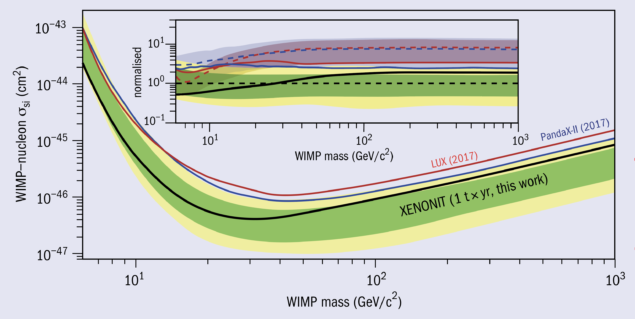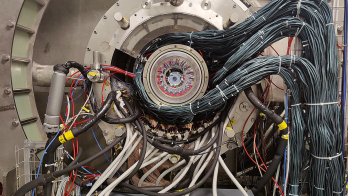
On 28 May, the world’s largest and most sensitive detector for direct searches of dark matter in the form of weakly interacting massive particles (WIMPs) released its latest results. XENON1T, a 3D-imaging liquid-xenon time projection chamber located at Gran Sasso National Laboratory in Italy, reported its first results last year (CERN Courier July/August 2017 p10). Now, the 165-strong international collaboration has presented the results from an unprecedentedly large exposure of approximately one tonne × year.
The results are based on 1300 kg out of the total 2000 kg active xenon target and 279 days of data-taking, improving the sensitivity by almost four orders of magnitude compared to XENON10 (the first detector of the XENON dark-matter project, which has been hosted at Gran Sasso since 2005). The data are consistent with background expectations, and place the most stringent limit yet on spin-independent interactions of WIMPs with ordinary matter for a WIMP mass higher than 6 GeV/c².
XENON1T spokesperson Elena Aprile of Columbia University in the US describes the result as a milestone in dark-matter exploration. “Showing the result after a one tonne × year exposure was important in a field that moves fast,” she explains. “It is also clear from the new result that we will win faster with a yet-larger mass and lower radon background, which is why we are now pushing the XENONnT upgrade.”
Further reading
E Aprile et al. 2018 arXiv:1805.12562.








